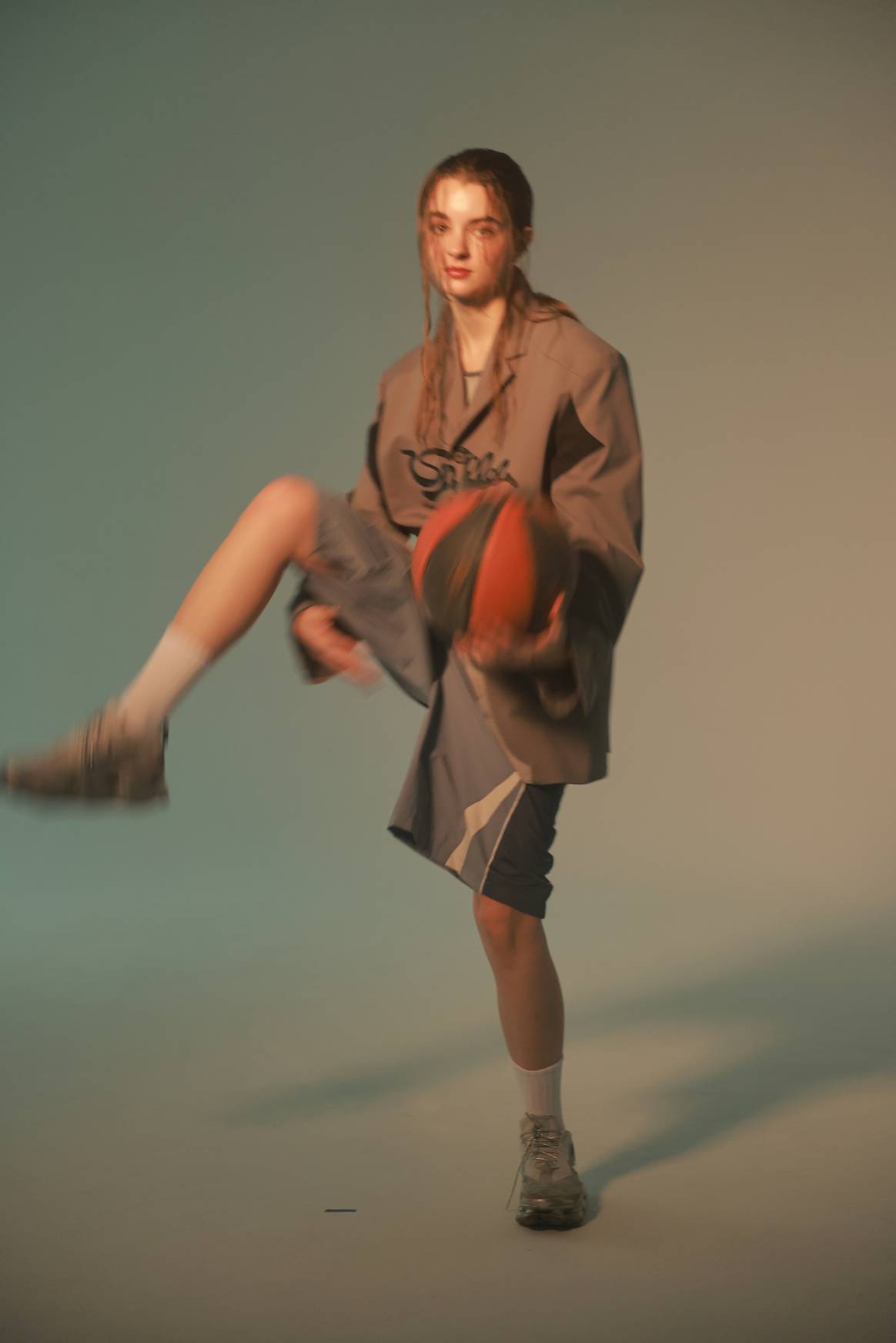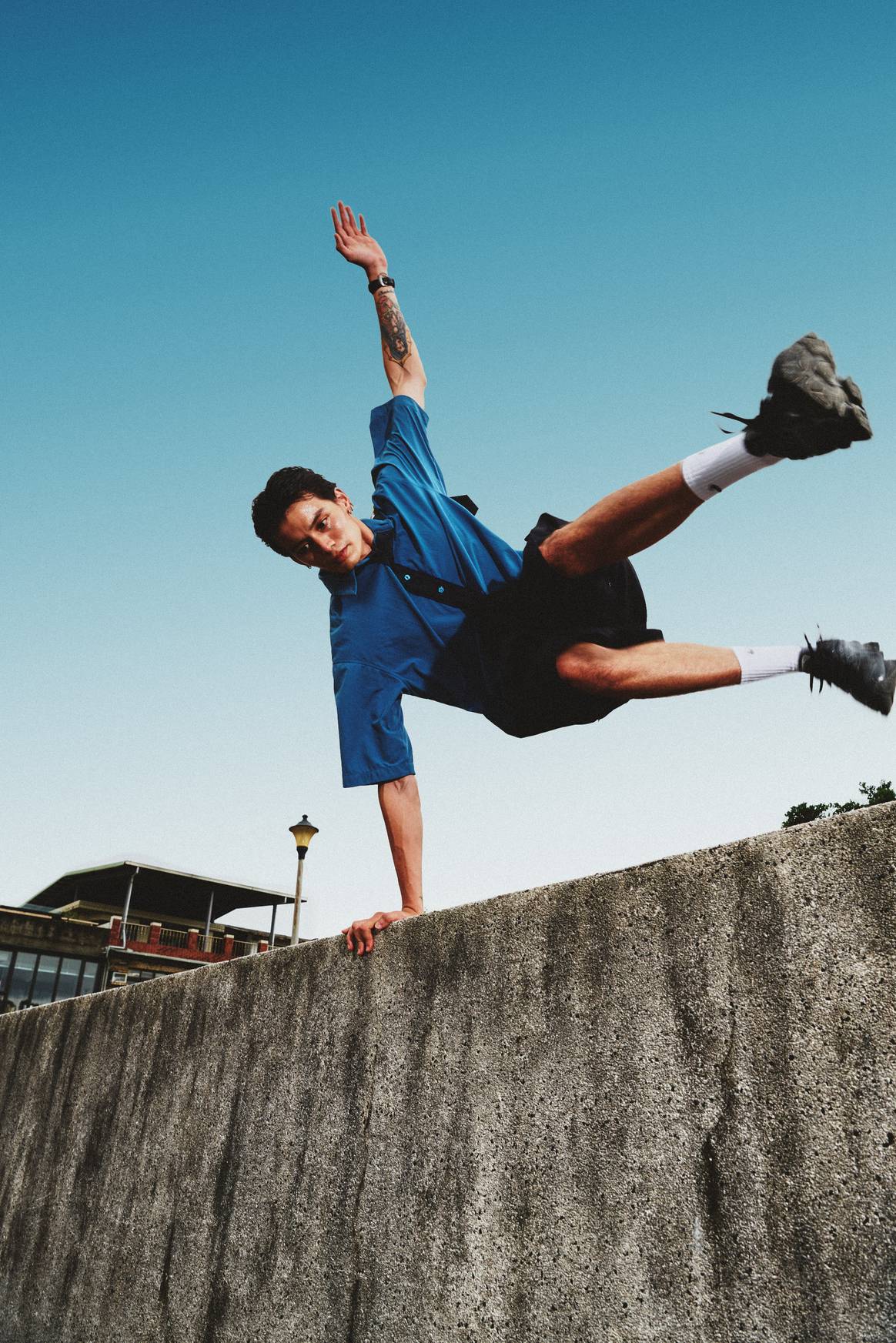Engaged in the clothing industry for 20 years.

From husk to yarn: The business behind Taiwan’s cacao textiles
In the realm of functional sportswear, Taiwan’s textile industry stands above all. One of the leaders in this sector is none other than GrandeTex, which, like its portfolio of materials, is a multifaceted firm. Carrying out pre-production, post-production and everything in between, the 2010-founded company has established an extensive line up of performance materials for some of sportswear’s biggest names.
“We are solution providers,” Mel Chen, the company’s general manager of global business development, simply summed up in an interview with FashionUnited. On visiting the company’s headquarters in an outer suburb of Taipei, the company and its head team’s straightforward perspective is already evident. Beyond the entryway, in which traditional wood-carved sculptures line each wall, is a showroom where a whole wall of material swatches are exhibited, each one meticulously crafted with special features, from anti-mosquito to anti-UV to anti-bacterial. “All brands have different requirements. We can cater to this and find the correct production method, the correct fabric and the correct function,” Chen added.

Next to an impressive array of certifications, including Bluesign and Oeko-Tex Standard, both recognising the company’s commitment to human-ecological requirements, GrandeTex really prides itself on being a jack of all trades. It is something Chen continues to emphasise alongside the proud affirmation that all of GrandeTex’s production process takes place locally, in the company’s home country of Taiwan. Despite calling this base home, the firm is one of the world’s biggest players when it comes to functional textiles. This, in fact, also remains true for the country as a whole, with estimates in recent years suggesting that Taiwan even holds over 70 percent of the global market for such produce.
A brief journey through Taiwan’s relationship with functional textile production
This figure may be unexpected to those unfamiliar with Taiwan’s industry, yet building up this specialised division within textile has been a core focus from the beginning of its development in the 1950s. Alongside the amplification of the country’s own economic expansion, Taiwan’s textile sector also experienced a major boom, the upsurge of which only coming to a slight halt ahead of the 90s, when low-cost production in China and Southeast Asia became more appealing to both global fashion brands and local firms, many of whom relocated to these locations in favour of more affordable methods.
A shift came, however, in the form of new innovation-focused government policies, pushing technologically-advanced processes and, as such, functional textiles to the forefront, allowing for Taiwan to cater to this niche market. Lacking in the way of popular materials like cotton and wool, Taiwan funnelled its efforts into synthetics. This came hand-in-hand with the added fortification of export-centric business models and an increased support of small-and-medium enterprises (SMEs), which today are considered the foundation of the country’s industry.
“The rate of cacao husk composting is much slower than its growth rate…”

A definitive resulting product of this expansive growth is that of ‘smart’ textiles, which mix classic textiles with new technologies – a concept that has an established spot among the portfolio of GrandeTex. Next to its more general offering of functional materials, for which it already counts the likes of sports brands Bergans, Ternua and Held Bikeway among its clients, the manufacturer has been upping the production of a textile formulated through waste cacao shells, leaning in on this fervour for ‘smart’ textiles.
So, why cacao? From process to product
In southern Taiwan alone, 2,000 tonnes of cocoa is exported every year, a quantity, Mel Chen noted, that equates to the weight of 2,000 African buffaloes. The abundance of product, however, is not where the issue, and GrandeTex’s resulting solution, lies. While 20 percent of the pulp and seeds of cacao beans are processed, the remaining husk becomes agricultural waste. “We have limited land in Taiwan,” Chen continued. “The rate of cacao husk composting is much slower than its growth rate, and burning it would cause air pollution.”
For GrandeTex’s CEO, Eric Chang, the solution was clear. GrandeTex set about finding ways to clean up waste dumps and use the husks as a raw material in textile technology, giving a new lease of life in the form of the patent-protected ‘Secao’ material. Since its launch in 2022, the production of the cacao yarn is carried out in collaboration with the Taiwan Agricultural Technology Research Institute and applies biological methodology to create the product, leveraging the husk’s high moisture content in fermentation and degradation to generate a master batch that can be drawn into a final yarn. “These steps ensure that the fabric can be decomposed by environmental microbial after burial in a landfill,” Chang added.

The product derives from local Taiwanese cacao farmers in the south of the country. Like functional materials, the chocolate sector is also thriving, with an international post-covid demand for Taiwanese chocolate seeing the sector flourish. While these farmers are not exactly part of the process after supplying their waste to Secao, the sustainability aspect does influence them, according to Chen.
The preceding technical phase, meanwhile, is well thought out among the GrandeTex team, who are careful to note that unlike the production of traditional fibres, Secao follows an approach that cuts out the need for carbonification in order to avoid air pollution. The result is a soft-to-the-touch material, similar to the texture of cotton, and still ingrained with all the various special features needed to please the sports-centric clientele.
Currently, the entirely self-funded company still has to incorporate small amounts of nylon and polyester into the final product, but the end goal is of course to make a material that is 100 percent cacao. The challenge here comes with cacao husks not readily offering a fibre, as other materials like cotton already do. The husk itself is extremely dry and needs to be crushed up to carry out the manufacturing process, calling for a change in the solution itself. Chen suggested that it could be 10 years before they are able to achieve this goal.

The roll out of a cacao brand
While the clear benefits of Secao in combination with GrandeTex’s strong ties with international sportswear players should already be a recipe for success for the innovative material, as already evidenced by the struggles of local European sustainable manufacturers, the global scaling of the Next Gen material has proved to be tricky. Client-facing efforts, like a rebranding and new logo, have helped to better position the product aesthetics-wise, yet, in order to further demonstrate and promote the qualities of the material, GrandeTex took to launching its own brand, with Secao at the heart of the design model.
‘Spfloe’, an individually operated label under the creative direction of a three-person in-house team, organically incorporates Secao into its streetwear-inspired designs, exhibiting the multi-functional range of the material with a mission of both building up its own consumer base while enticing possible future clients for GrandeTex. It is the former, however, that is on the minds of its design team. “We want to redefine functional clothing, which can sometimes be too sporty,” said Corinna, one of the designers for the brand. “We want to bring functional fabric into all aspects of a person’s life, so you can even wear it to work, for example.”
“We want to bring functional fabric into all aspects of a person’s life…”

The pursuit of wearable, daily performance wear reflects a post-covid ‘holistic lifestyle’ trend evident among Taiwanese consumers. As such, the material can be found in both T-shirts, biker shorts and hoodies as well as dresses, cargo pants and skirts. While the brand already sells a selection of these products online, catering to its main market of Taiwan, it also operates a showroom in London, where it can foster a closer connection with its desired customer base as well as relevant influencers residing in the city. The relationship with these select individuals is a purposefully close one, with their opinions and feedback acquired to then inform on the next step of the brand and its product development.
Parisian pop-ups and international trade shows on the horizon
This emphasis on the Western market will be intensified when Spfloe participates alongside other brands from Asia and beyond in a Parisian pop-up store event spanning July 5 to 13, suitably coinciding with the city’s upcoming Olympic games. Here, the label and its team will also be unveiling a collection themed around the international sports event, ‘Olympic Dreamers’. This echoes not only Spfloe’s individual intention to internationalise, but also the equivalent mission of its parent company, GrandeTex, for which the international market is already a major benefactor to the business.

While there is interest from the internal market of its home country, GrandeTex continues to push its products globally by taking advantage of European and US textile trade shows where it onboards more clientele within all realms of sports, from golfing to biking to skiing. In July, for example, the company will be attending Texworld in Paris and Function Fabric Fair in New York, before making its way over to LA Textile in September.
One fascinating avenue of growth, however, is the possibility of working with retailers that already supply chocolate. Without disclosing the name of the specific retailer, the team at GrandeTex noted that it had been speaking with one global department store on establishing connections that would tie their supply of chocolate to that of an associated clothing collection incorporating Secao material. With this, Mel Chen said that they can then provide “new stories to tell customers”, while bringing the offering full circle through chocolate-produced clothing. If achieved, such a feat would mark a notable escalation in the way of possibilities for Next Gen materials.


